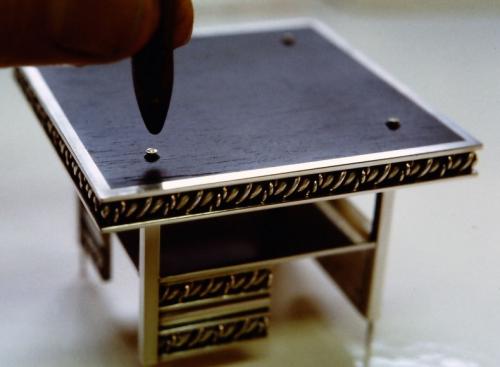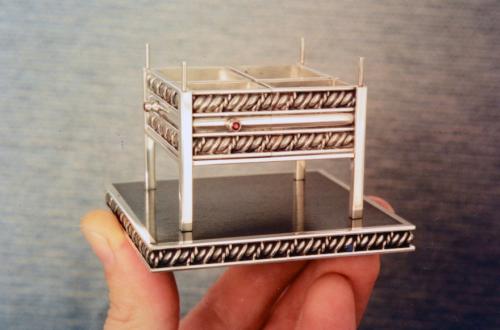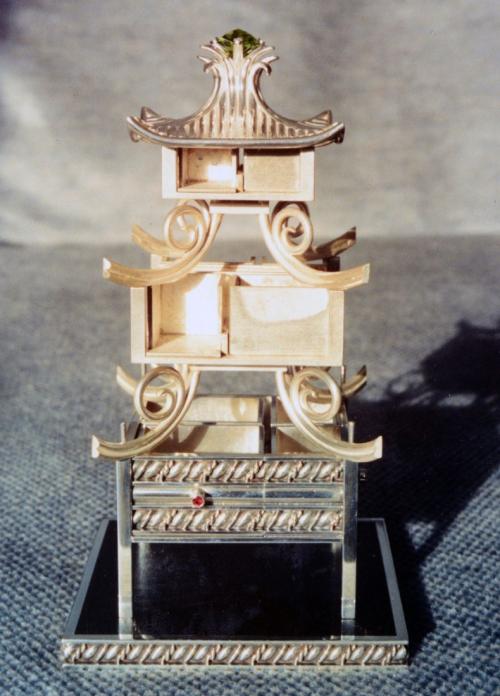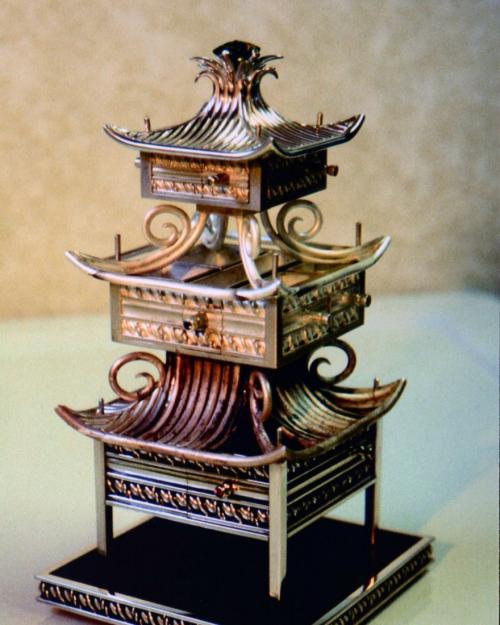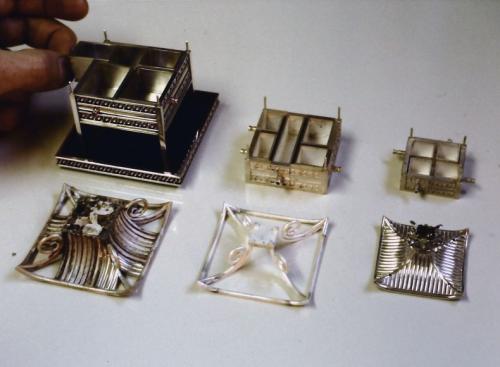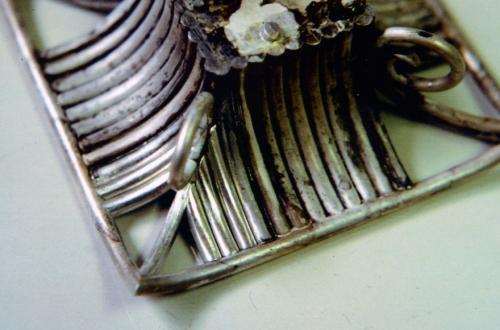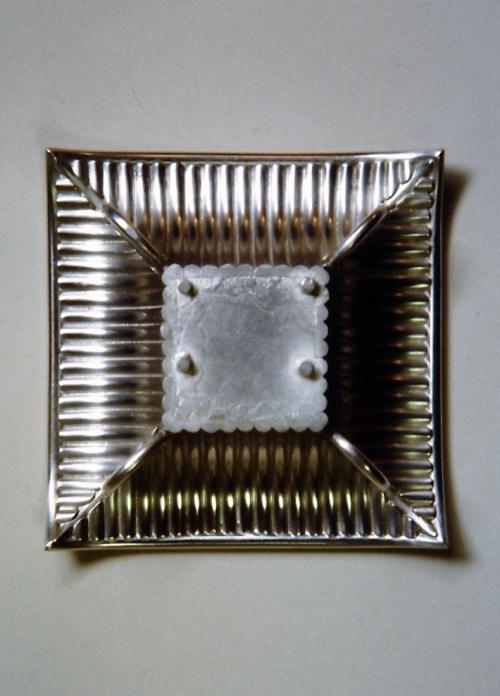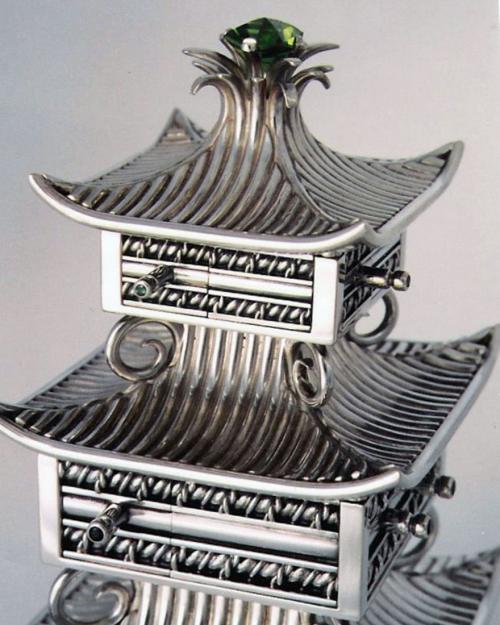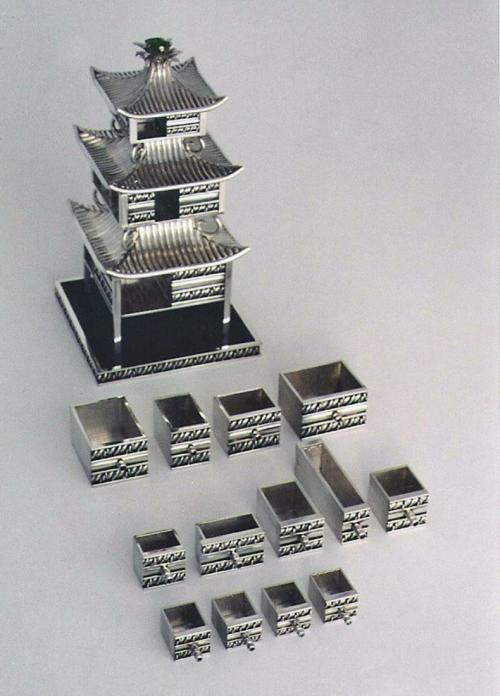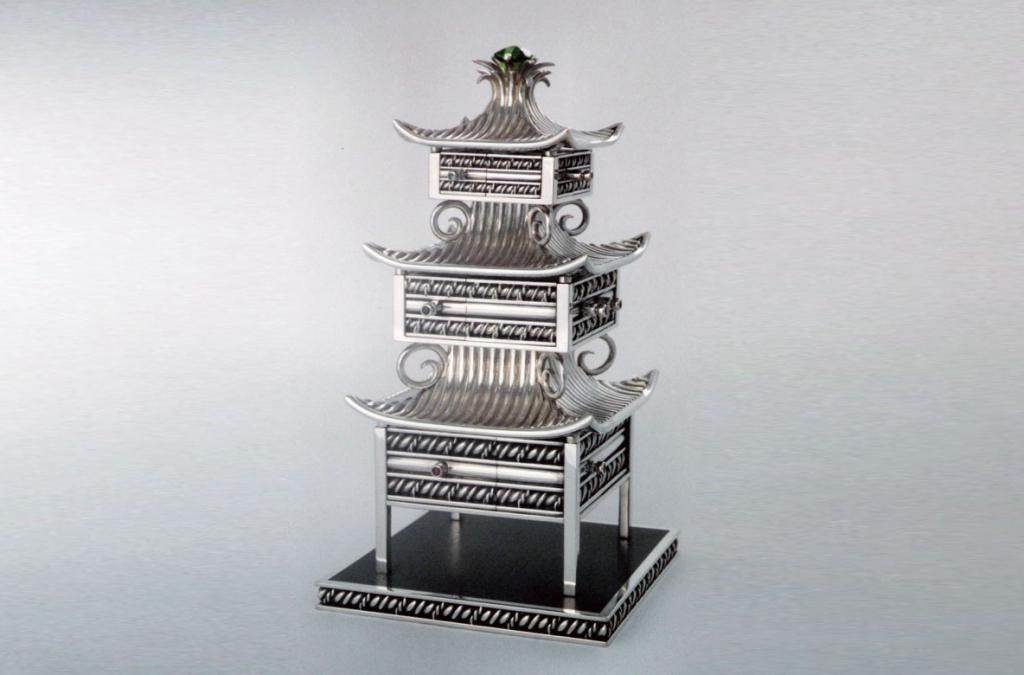
The commission for this Pagoda-shaped miniature chest of drawers came from a man who had spent his childhood years in China. His name was Arthur Brecken and he was my first teacher of silver work. In the use of round wire and twisted wire patterning, the Pagoda is a tribute to his style.
The following pictures show just a few highlights in the overall process of building this piece. For example, in the photos the lower layer of drawers and the top roof with a peridot at its apex are already finished.
The seven main components (the ebony base, the 3 layers of drawers, and the 3 roofs) all become mechanically secured to one another by way of blind rivets.
The three layers of drawers are each colour-coded by a different type of stone set in their drawer handles — rubies in the bottom layer, sapphires in the middle, and emeralds in the upper.
